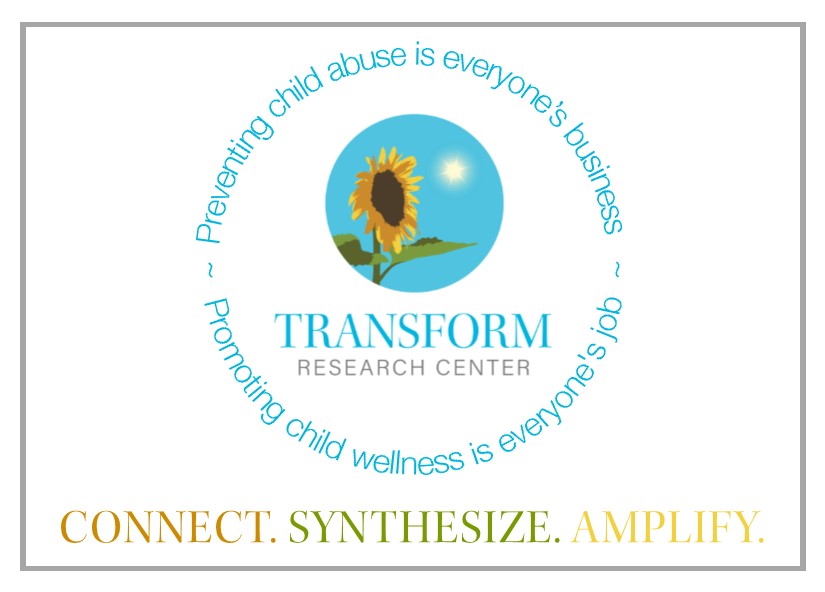TRANSFORM- About

Every year, millions of children in the United States suffer child abuse and neglect (USDHHS, 2017). Our CAPSTONE Center for Multidisciplinary Research in Child Abuse and Neglect (P50) Project is a national resource center for conducting innovative research, disseminating emerging discoveries, and training investigators, clinicians, and professionals committed to preventing the occurrence of, and understanding the sequelae of, child maltreatment.
The TRANSFORM Center (Translational Research that Adapts New Science FOR Maltreatment Prevention) builds on current state-of-the-art research methodologies and clinical practices to foster the next generation of professionals committed to addressing the deleterious and persistent personal and societal burden associated with child abuse and neglect.
The TRANSFORM Center expands upon the strengths of Mt. Hope Family Center (MHFC) at the University of Rochester (UR). The Center will impact the field by serving as a national model on the conduct of multi-level investigations of the etiology and sequelae of child maltreatment, as well as on multi-level investigations of evidence-based preventive interventions. TRANSFORM is well-positioned to achieve its goals and applies a multidisciplinary translational approach embedded in a developmental psychopathology framework that builds upon discoveries in genetics, neuroscience, neurobiological, prevention and intervention science, child welfare, and court systems to develop an innovative national resource for individuals in diverse disciplines and professional arenas.
To achieve this mission, TRANSFORM utilizes two mutually-informative and integrated cores: a Community Engagement Core, and an Administrative Core, as well as two research projects under TRANSFORM’s umbrella led by Principal Investigators Drs. Sheree Toth and Jennie Noll. These individual components: research projects, dissemination of knowledge and best practice, broad community engagement, education of junior scholars, students practitioners, and the lay public, as well as administrative functions, closely align for operational synergy that facilitates communication and promotes a whole that is stronger than the sum of the individual components. Efforts to break the intergenerational cycles of child maltreatment can only succeed when innovative science translates into future education and effective interventions for child-serving systems, which to date, remain largely isolated from each other.

